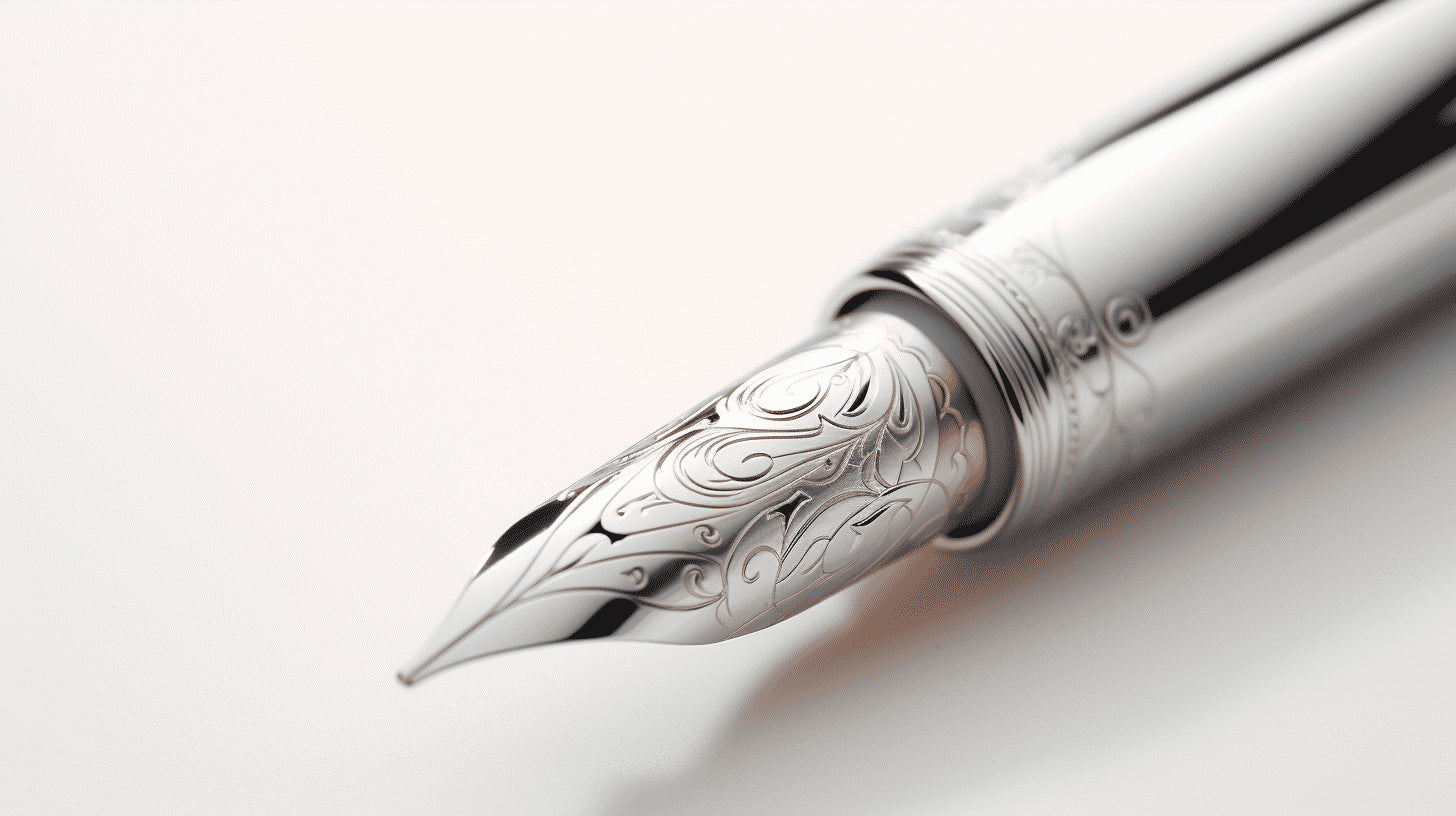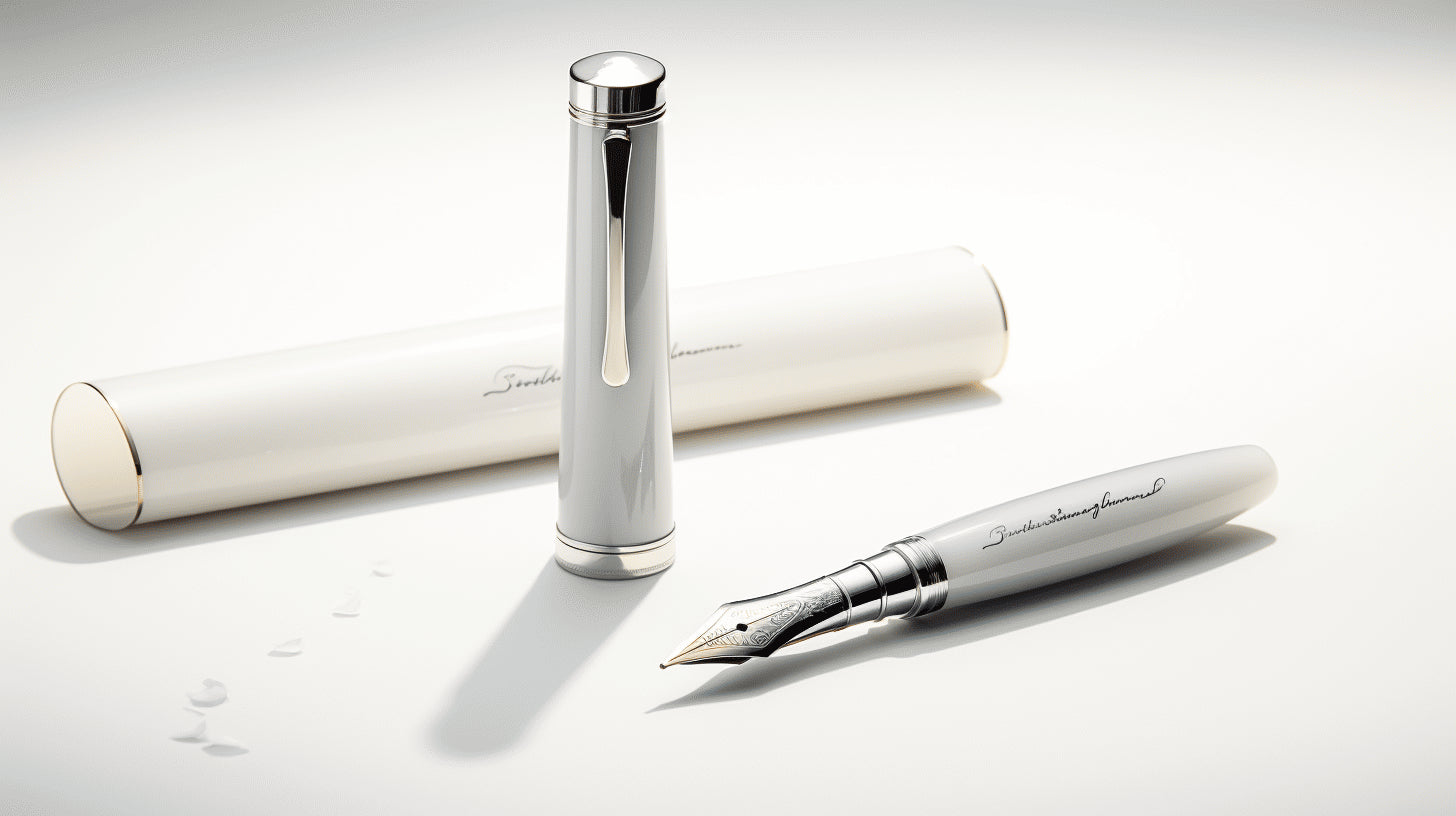
The Art of Nib: Understanding Fountain Pen Nibs and Their Influence on Writing
Fountain pens have a certain allure that sets them apart from other writing instruments. There's something undeniably satisfying about the smooth flow of ink onto a page, giving your words a sense of elegance and permanence. And at the heart of every fountain pen lies the nib – the tiny, but mighty, component that has a significant impact on your writing experience.
In this article, we will dive into the art of nibs, exploring the different types, sizes, and styles that exist in the fountain pen world. We'll unravel their influence on writing and help you understand how to choose the perfect nib for your unique needs.
So, whether you're a novice pen enthusiast or a seasoned collector, get ready to discover the secrets behind fountain pen nibs and unlock a whole new level of writing pleasure. Let's embark on this journey together and explore how nibs shape the way we write.
Global Fountain Pen and Luxury Pen Markets
When it comes to writing instruments, the allure of fountain pens and luxury pens cannot be denied. These elegant and sophisticated tools exude a sense of style and refinement that simply cannot be replicated by their digital counterparts. But what does the global market for fountain pens and luxury pens look like? Let's explore the market size and growth, trends in pen brands, and product development in this fascinating industry.
Market Size and Growth
The global fountain pen market has been steadily growing over the years, and its future looks promising. In 2021, the market was valued at USD 929.0 million, and it is expected to continue growing at a compound annual growth rate (CAGR) of 2.51%. On the other hand, the global luxury pen market was valued at USD 276.6 million in 2020 and is projected to grow at a CAGR of 1.9% from 2021 to 2028. These numbers highlight a strong demand for fountain pens and luxury pens worldwide.
Trends in Pen Brands
Japan, with its rich history of craftsmanship and attention to detail, has been at the forefront of pen trends. Brands like Sailor and Pilot have gained significant popularity, not only in Japan but also among pen enthusiasts across the globe. These brands offer exquisite designs and exceptional writing experiences, which have captured the hearts of many pen aficionados.
Product Development
Manufacturers in the fountain pen and luxury pen industry are not resting on their laurels. They are constantly investing in product development to enhance the writing experience and cater to the evolving preferences of consumers. One area of focus is modifying luxury pen nibs with platinum and other expensive metals. These enhancements not only add a touch of elegance but also improve the smoothness and precision of the writing experience.
Additionally, there is a growing trend towards using gold nibs for fountain pens. Gold, known for its flexibility and durability, provides a unique writing experience that cannot be replicated with other materials. The allure of gold nibs lies in their ability to adapt to the user's writing style over time, making each stroke a personalized expression of creativity.
In conclusion, the global fountain pen and luxury pen markets are witnessing steady growth and exciting trends. With a focus on product development and the emergence of innovative pen brands, the future of this industry looks promising. So, whether you are a seasoned collector or just starting your journey into the world of fountain pens, there is no better time to indulge in the sheer pleasure of writing with these exceptional instruments.
The Influence of Nib Length on Writing Experience
When it comes to fountain pens, there are many factors that contribute to the overall writing experience. One often overlooked element is the length of the nib. While it may seem like a small detail, the length of the nib can actually have a significant impact on the character of the writing and the overall satisfaction of using a fountain pen.
The nib length refers to the portion of the pen that comes into contact with the paper when writing. It determines the amount of ink that is released onto the page, as well as the flexibility and responsiveness of the nib. A shorter nib will have a different feel and performance compared to a longer nib, and it's important to choose the right length for your personal preferences and writing style.
Here are a few key points to consider when it comes to the influence of nib length on the writing experience:
- Ink Flow: The length of the nib directly affects the amount of ink that is dispensed onto the paper. A longer nib will typically allow for a higher ink flow, resulting in a wetter and broader line on the page. On the other hand, a shorter nib will provide a drier and narrower line. This difference in ink flow can greatly impact the overall look and feel of your writing.
- Flexibility: A longer nib tends to have more flexibility, meaning it can bend and adapt to the writer's hand movements more easily. This flexibility allows for greater line variation and can create beautiful, expressive writing. On the contrary, a shorter nib will have less flexibility, resulting in a more consistent line width throughout the writing.
- Control: The length of the nib also plays a role in the level of control you have over your writing. A longer nib allows for more precision and fine details, making it ideal for calligraphy or intricate handwriting styles. Conversely, a shorter nib may offer a more stable and controlled writing experience, making it suitable for everyday writing tasks.
As you can see, the length of the nib can significantly influence the writing experience. Whether you prefer a broad, expressive line or a controlled, precise stroke, choosing the right nib length is crucial. Experimenting with different lengths can help you find the perfect fit for your writing style and enhance your overall enjoyment of using a fountain pen.
To delve deeper into the world of fountain pen nibs and their influence on writing, check out this article on the influence of nib length. It provides additional insights and tips for selecting the perfect nib length for your writing needs.
Nib Styles and Sizes
Fountain pens are known for their wide array of nib styles and sizes, offering a personalized writing experience for every user. Whether you prefer a flexible nib that allows for varying line widths or a standard nib size for consistent lines, there is a nib out there to suit your needs.
Flexible Nibs
In recent years, there has been a rise in the popularity of flexible nibs. These nibs have the ability to flex and create line variations as the writer applies pressure while writing. This flexibility allows for expressive and artistic handwriting, making it a favorite among calligraphers and enthusiasts alike. With a flexible nib, you can effortlessly transition from thin hairlines to bold strokes, adding a unique touch to your handwriting.
If you're interested in exploring the world of flexible nibs, check out this article on Different types of pen nibs for more in-depth information.
Nib Sizes
When it comes to standard nib sizes, fountain pens typically offer a range of options to accommodate different writing preferences. The most common nib sizes are:
- Extra Fine (EF): Ideal for those seeking precision and fine lines.
- Fine (F): Suitable for everyday writing, providing a balance between precision and ink flow.
- Medium (M): A versatile nib size that offers a smooth writing experience.
- Broad (B): Perfect for those who enjoy bolder lines and a substantial presence on the page.
In addition to these common nib sizes, there are also some additional sizes that cater to specific preferences:
- Stub (S): Known for its flat tip, creating a distinct line variation depending on the direction of the stroke.
- Italic (I): Similar to a stub nib, but with sharper edges, resulting in more pronounced line variations.
- Music (M): A nib designed specifically for music notation, allowing for different line widths to represent different musical elements.
- Oblique (O): Featuring a slanted tip, providing an alternative writing angle that can improve comfort and ink flow for certain writing styles.
By understanding the different nib sizes and styles available, you can choose the perfect nib that complements your handwriting, purpose, and personal style. So go ahead, experiment with different nibs, and discover the joy of fountain pen writing!
European Market and Luxury Pen Users
Europe predicted to contribute around 33% of market growth, given its habitual luxury pen users.
European market is home to many habitual luxury pen users.
The European market has long been a hub for luxury goods, and the world of fine writing instruments is no exception. With a rich cultural heritage and a penchant for elegance and sophistication, it comes as no surprise that Europe is home to many habitual luxury pen users. In fact, it is predicted that Europe will contribute around 33% of the market growth in the coming years.
One of the defining characteristics of luxury pen users in Europe is their appreciation for craftsmanship and attention to detail. They value the artistry that goes into creating a fine writing instrument and seek out pens that not only function flawlessly but also exude a sense of timeless beauty.
But what sets European luxury pen users apart from their counterparts across the globe? Let's take a closer look:
- Sophisticated Taste: Europeans have a refined taste when it comes to luxury items, and their choice of writing instruments is no exception. They appreciate pens made from high-quality materials such as precious metals, fine woods, and exquisite lacquers.
- Cultural Significance: Many European countries have a long-standing tradition of handwriting and calligraphy. Writing is seen as an art form, and using a luxury pen adds an element of prestige and tradition to the act of putting words on paper.
- Attention to Detail: Europeans are known for their meticulous attention to detail, and this translates into their choice of luxury pens. They prefer pens that are not only aesthetically pleasing but also have well-crafted nibs that deliver a smooth and precise writing experience.
- Fashion Statements: Luxury pens are more than just writing tools to European users; they are fashion statements. A fine pen can complement an outfit, convey personal style, and make a statement about one's taste and sophistication.
- Collectibility: Europeans have a penchant for collecting, and luxury pens offer the perfect opportunity to indulge in this hobby. From limited editions to special collaborations, there is always a new pen to add to their collection.
With its rich cultural heritage, appreciation for craftsmanship, and sophisticated taste, it's no wonder that Europe is a significant player in the luxury pen market. As the demand for fine writing instruments continues to grow, European luxury pen users will undoubtedly remain at the forefront of this timeless tradition.
Conclusion
In conclusion, the choice of a fountain pen nib plays a crucial role in shaping your writing experience. Whether you prefer a smooth and consistent flow of ink or a more expressive and flexible nib, understanding the different nib styles and sizes is essential. Additionally, the length of the nib also affects the overall feel of the pen in your hand and the precision it offers.
By exploring the global fountain pen and luxury pen markets, we can see the growing demand for high-quality writing instruments. As trends in pen brands and product development continue to evolve, it is clear that fountain pens remain a timeless choice for discerning writers.
If you're looking to enhance your writing experience and add a touch of elegance to your pen collection, consider exploring Wood Fountain Pens. With their handcrafted wooden designs and attention to detail, these pens offer a unique blend of artistic beauty and functional precision. Visit their website here to discover the allure of Wood Fountain Pens and elevate your writing to new heights.
Frequently Asked Questions
-
What are the different types of fountain pen nibs?
The different types of fountain pen nibs include fine, medium, broad, italic, stub, flex, and oblique nibs. Each nib type offers a unique writing experience and line variation.
-
Which nib size is suitable for everyday writing?
For everyday writing, a medium or fine nib size is generally recommended. These nib sizes provide a smooth and consistent writing experience suitable for various writing tasks.
-
What is the difference between a flex nib and a regular nib?
A flex nib is designed to provide line variation based on pressure applied during writing. It allows for wider and narrower lines, adding character to handwriting. Regular nibs, on the other hand, do not offer much line variation.
-
How do I maintain and clean a fountain pen nib?
To maintain and clean a fountain pen nib, rinse it with lukewarm water to remove excess ink. Use a bulb syringe to flush out any remaining ink from the feed and nib. Gently wipe the nib with a lint-free cloth and store the pen upright.
-
Can I change the nib on my fountain pen?
In most cases, fountain pen nibs can be changed or replaced. However, it is advisable to consult the pen manufacturer or a professional to ensure compatibility and proper installation.







Leave a comment
This site is protected by hCaptcha and the hCaptcha Privacy Policy and Terms of Service apply.